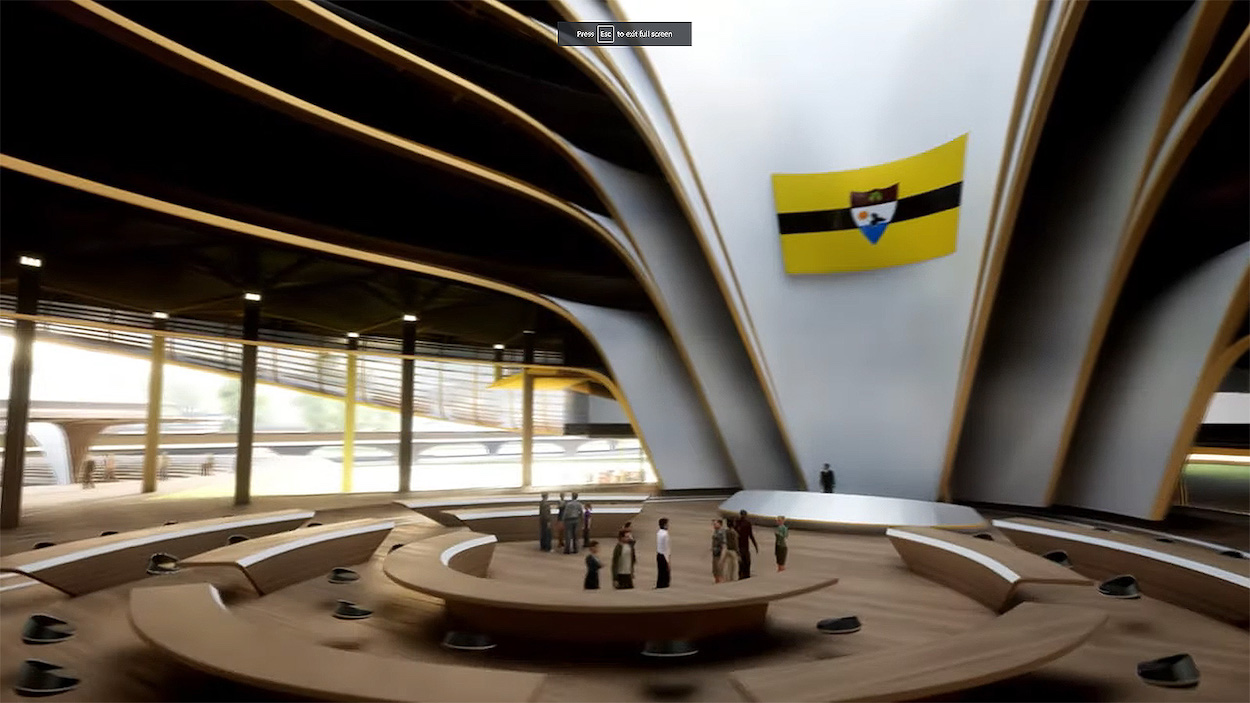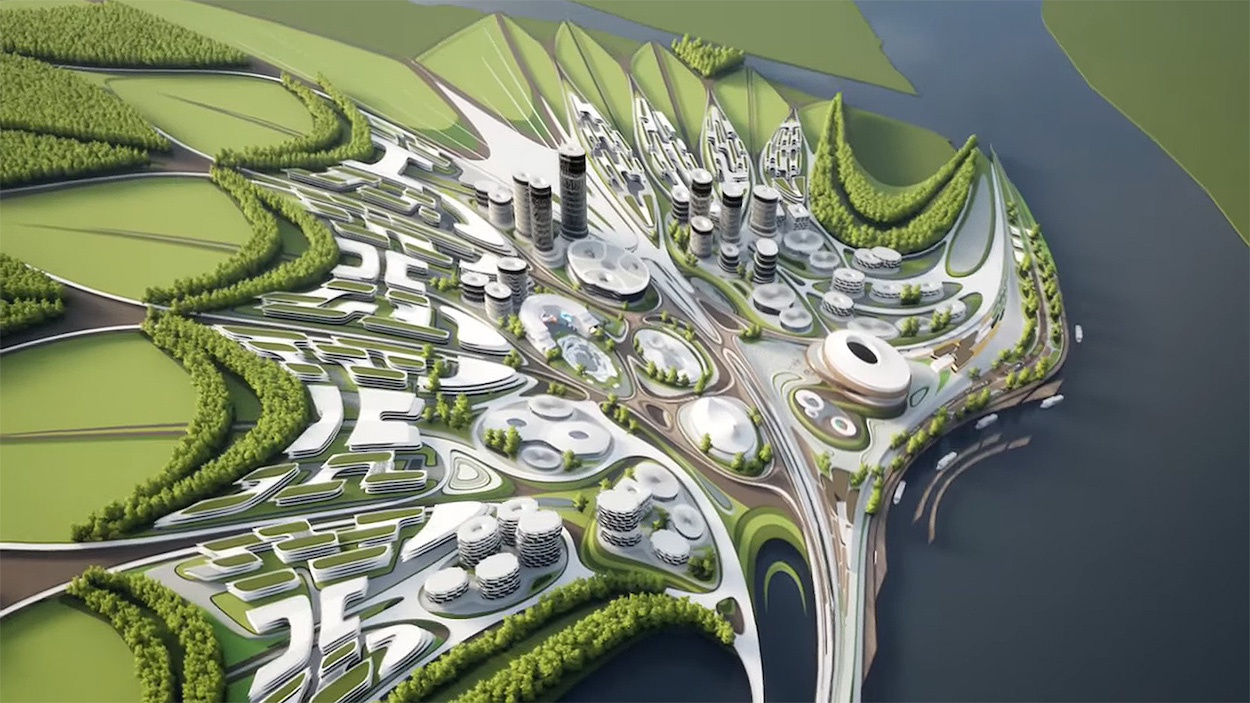In 2015, the libertarian Czech politician Vít Jedlicka founded the Free Republic of Liberland on three square miles of uninhabited and disputed land between Croatia and Serbia. The micronation lacks infrastructure, diplomatic recognition, and entry from its neighboring countries, but is quickly taking shape in the metaverse thanks to a dramatic virtual scheme by Zaha Hadid Architects (ZHA) principal Patrik Schumacher. In his eyes, the would-be country is a futuristic oasis sporting a buzzy NFT trading room and sweeping office towers, all rendered in Hadid’s trademark style of parametricism. “It was time to turn ideas into something more concrete,” Jedlicka tells Quartz. “It’s important to show to the world that we’re serious about starting development in Liberland.”
Jedlicka and Schumacher both intend for Liberland’s ambitious virtual architecture, designed on the platform Mytaverse, to become a template for the micronation’s eventual physical presence. It will also serve as a testing ground for ZHA’s ongoing exploration of parametricism, uninhibited by budgets, physics, or safety codes. For this reason, Schumacher insists that architecture firms—especially younger ones—should take the metaverse seriously in its nascent stages. (The firm recently presented NFTism, a virtual gallery during Art Basel Miami Beach that explored social interaction and architecture in the metaverse.) Speculated to be a multitrillion-dollar opportunity and one of the biggest disruptions to humanity, the network of virtual worlds has been criticized as overhyped and a nightmare to regulate.


